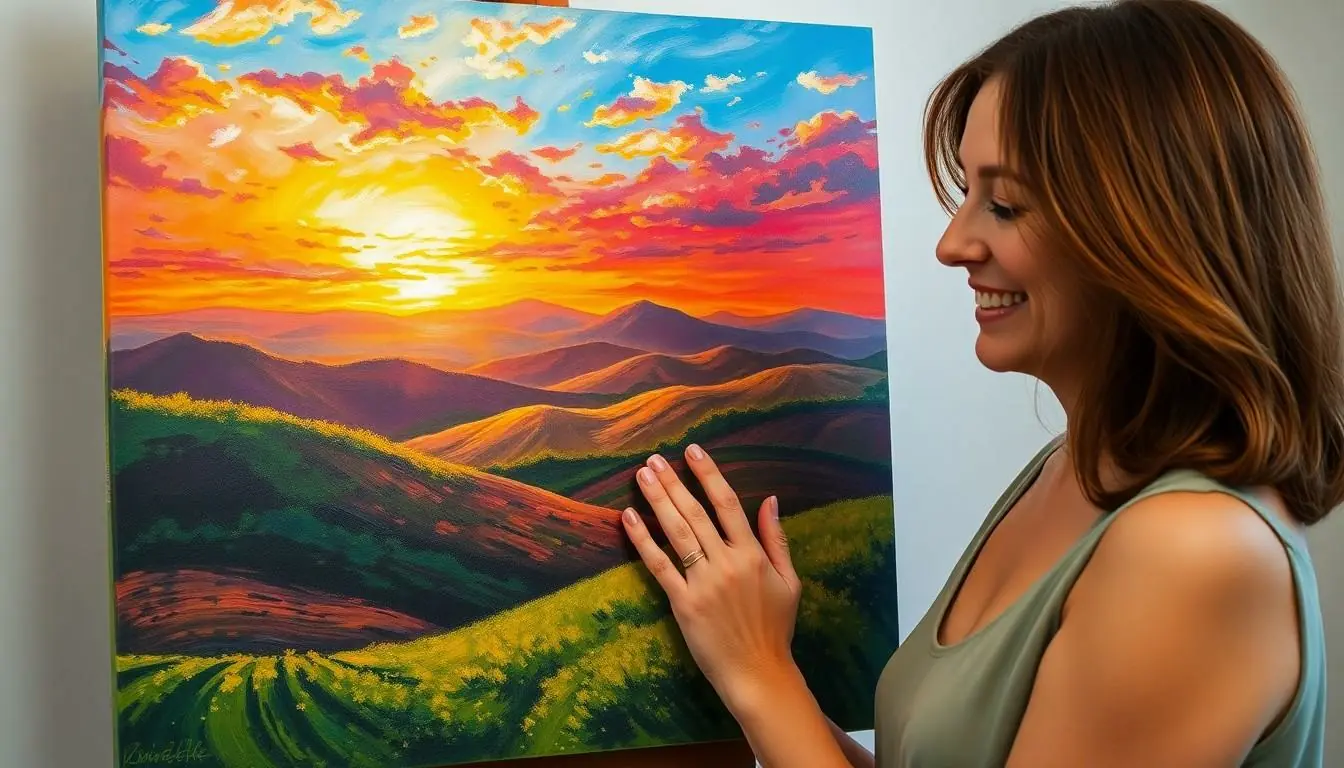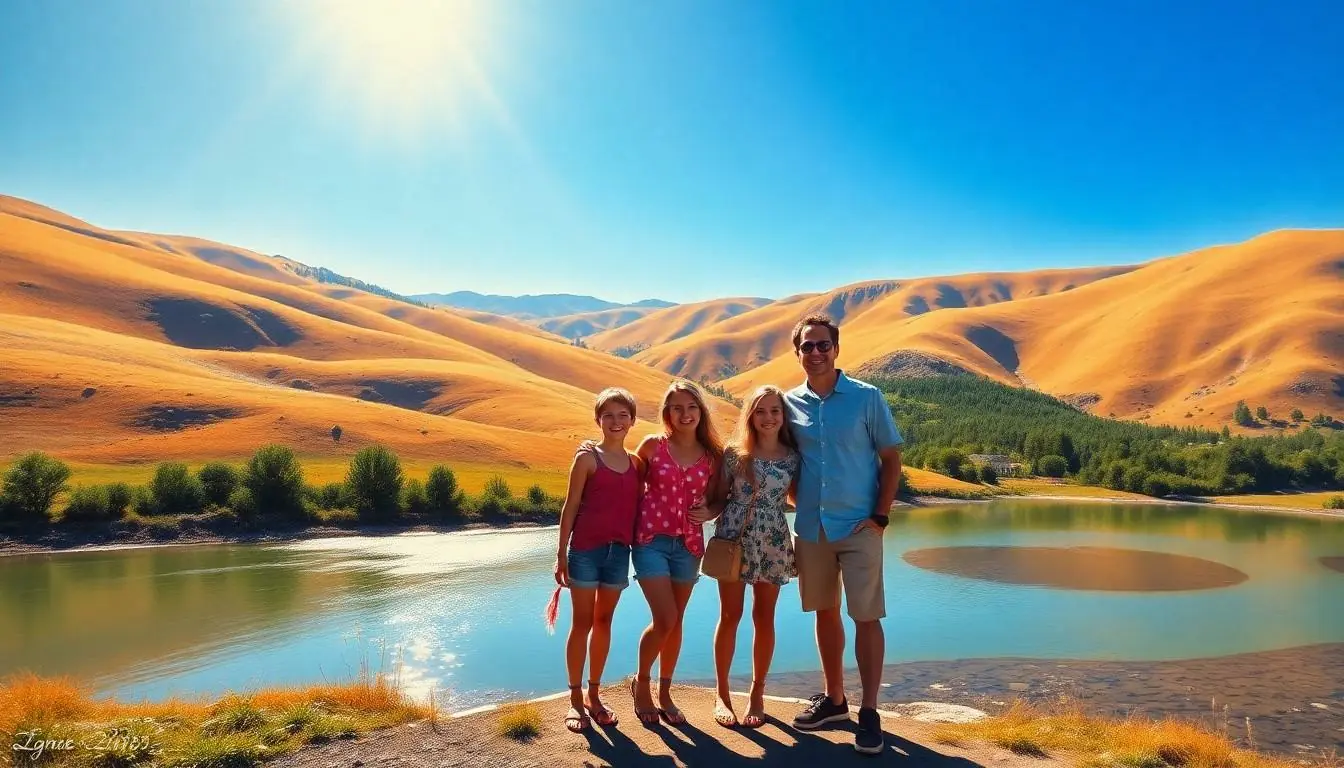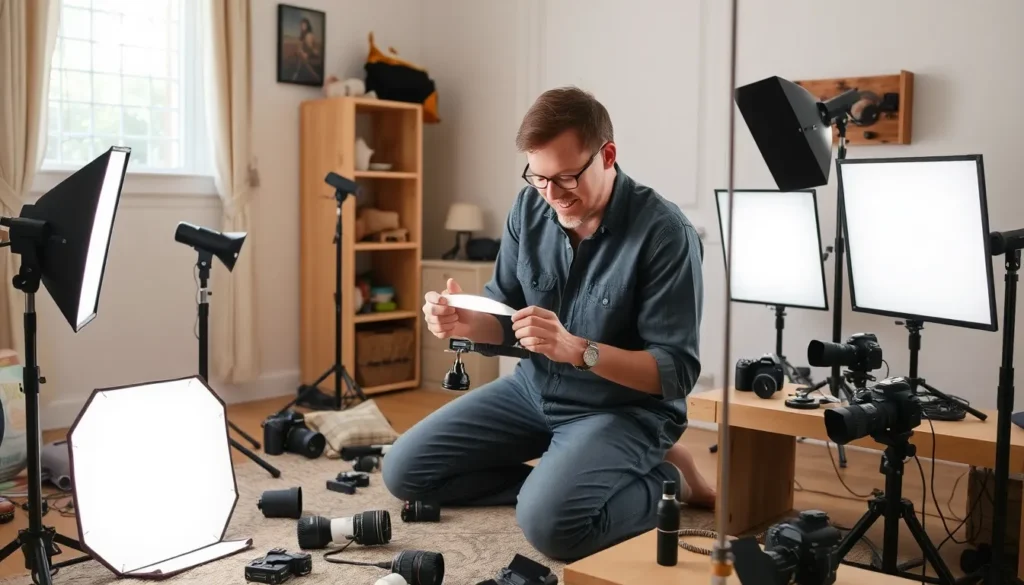Ever looked at a photo and thought, “This would look amazing as an oil painting?” Well, you’re not alone. Transforming a snapshot into a classic work of art can make even the most mundane moments feel like a masterpiece worthy of a gallery. Imagine your family portrait hanging in the living room, but instead of a photo, it’s a stunning oil painting that sparks conversation and admiration.
With today’s technology, turning a photo into an oil painting is easier than ever. It’s like giving your favorite memories a stylish makeover without needing to master the brush yourself. Whether it’s a cherished vacation memory or a beloved pet, this artistic twist not only elevates your decor but also adds a touch of sophistication. So why not take the plunge and let your photos live their best artistic life?
Table of Contents
ToggleUnderstanding Oil Paintings
Oil paintings date back to the 15th century and became a favored medium among artists. Artists appreciate oil paints for their rich texture and vibrant colors. This medium allows for gradual blending, creating depth and detail in artworks.
In an oil painting, pigments are suspended in oil, often linseed oil, enhancing the luminosity of the colors. The slow drying time provides artists the flexibility to work and refine their creations over extended periods. Various techniques, such as glazing and impasto, contribute to the painting’s overall texture and visual effects.
The significance of oil paintings extends beyond aesthetics; they represent historical moments and cultural narratives. Famous artists like Rembrandt and Van Gogh have made their marks with unique styles and techniques. Their works continue to influence contemporary artists, underscoring the ongoing relevance of oil painting in the art world.
Additionally, oil paintings often require careful handling and preservation. Factors such as temperature and light exposure can affect the longevity of these masterpieces. Proper care ensures that both original works and reproduction pieces maintain their vibrancy over time.
Transforming a photograph into an oil painting allows for capturing the essence of that moment in a timeless format. Artists observe details and nuances in photographs that can be reinterpreted through the oil painting process. This transformation can provide sentimental value and elevate simple images into cherished works of art.
Benefits Of Turning Photos Into Oil Paintings

Transforming photos into oil paintings offers significant advantages, enhancing both aesthetics and emotional value.
Artistic Expression
Artistic expression emerges prominently through oil paintings. The medium showcases unique styles, enabling artists to reflect personal emotions and creativity. Rich texture in oil paints allows for dynamic brushstrokes, creating depth and visual interest. Each transformation provides an opportunity to explore various artistic techniques, such as blending and layering. These techniques contribute to a distinctive masterpiece that reflects the subject’s essence. With the capacity to capture moments in vivid color, this process elevates photographs beyond mere images, serving as a canvas for individual storytelling.
Personalization
Personalization plays a vital role in the appeal of commissioned oil paintings. They transform favorite moments into tailored art pieces, perfectly suited for unique tastes and preferences. Personalized oil paintings add a special touch to any room, creating a focal point that resonates with viewers. When individuals select elements like color palettes or stylistic choices, it ensures the final artwork aligns with their vision. The act of converting cherished memories into art fosters a deeper emotional connection, making the piece a treasured memento.
Methods To Turn Photo Into Oil Painting
Multiple methods exist to transform photographs into oil paintings, combining modern digital tools with traditional art techniques.
Digital Software Options
Various digital software programs offer impressive capabilities for turning photos into oil paintings. Programs like Adobe Photoshop allow users to apply filters that mimic oil painting techniques, adjusting brushstrokes and textures. Corel Painter is another popular choice, boasting specialized tools designed specifically for creating painterly effects. Some apps, such as Prisma and DeepArt, use artificial intelligence to analyze images and recreate them in stunning oil painting styles. These options present easy alternatives for those lacking painting skills yet seeking artistic results.
Traditional Techniques
Artists often use traditional techniques to create oil paintings from photographs. Starting with a printed photo, they sketch outlines on canvas, ensuring proportions remain accurate. Using oil paints, they layer colors, blending them gradually to achieve depth and detail. Techniques like glazing, where a thin layer of transparent paint is added, can enhance luminosity. Many artists focus on texture, employing palette knives or brushes to achieve a desired effect. This approach requires practice and skill, highlighting the artist’s personal touch in every piece.
Tips For Achieving The Best Results
Selecting the right photograph significantly impacts the oil painting outcome. Focus on images with clear subjects and compelling compositions. Portraits of people or serene landscapes often yield stunning results. Choose well-lit photos to ensure details are captured effectively. High-resolution images provide a better quality final product, enhancing clarity in the painting.
Considering colors plays a vital role in the transformation process. Start by analyzing the overall color palette of the chosen photograph. Bold, vibrant hues translate brilliantly in oil paintings, while subdued or monochromatic tones may create a more muted effect. The contrast between colors contributes to depth and dimension, highlighting essential elements. Ultimately, blending complementary colors enhances the richness of the artwork, creating a visually striking piece that draws attention.
Transforming a photograph into an oil painting is more than just a creative endeavor; it’s a way to immortalize cherished memories in a timeless format. This process not only enhances the aesthetic appeal of any space but also fosters a deeper emotional connection to the artwork.
With modern technology making it easier than ever to achieve stunning results, anyone can explore their artistic side without needing extensive skills. Whether opting for digital tools or traditional techniques, the possibilities are endless. Embracing this unique transformation can turn ordinary moments into extraordinary masterpieces, enriching both home decor and personal expression.



